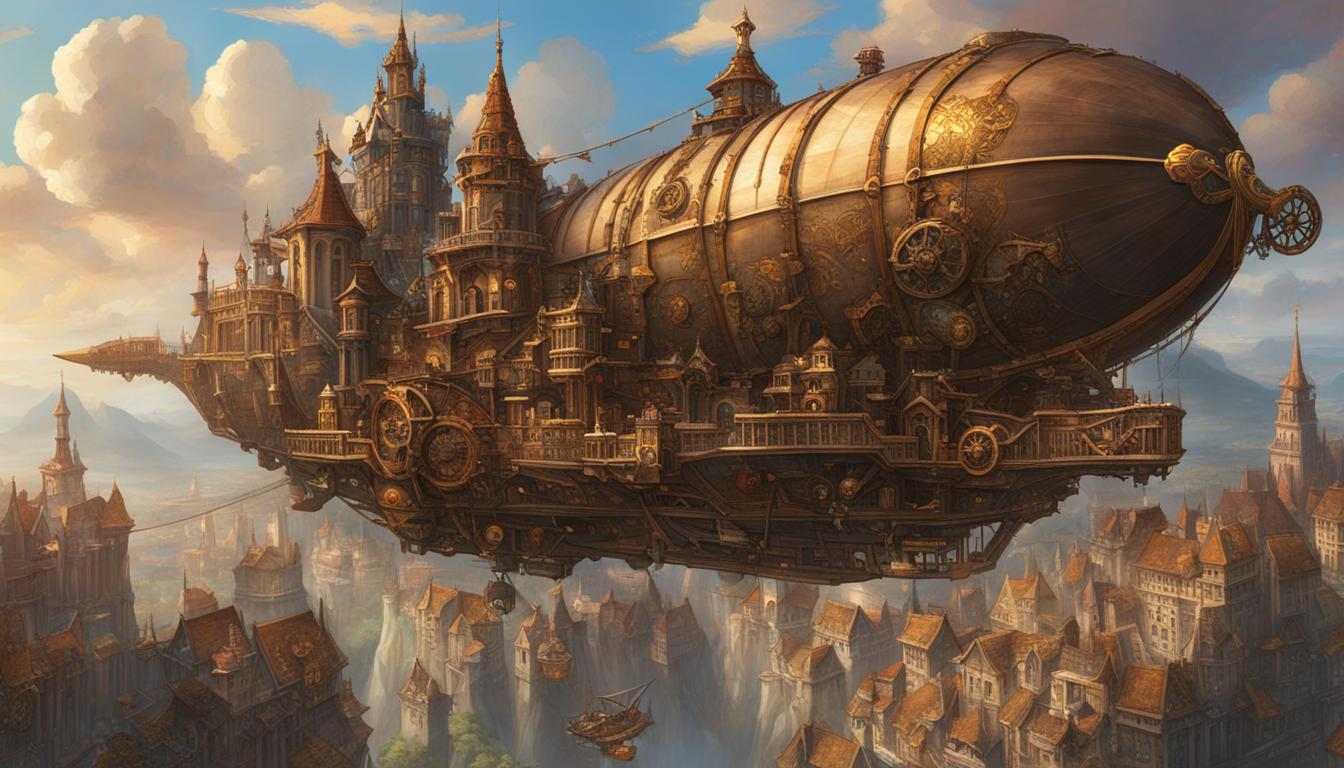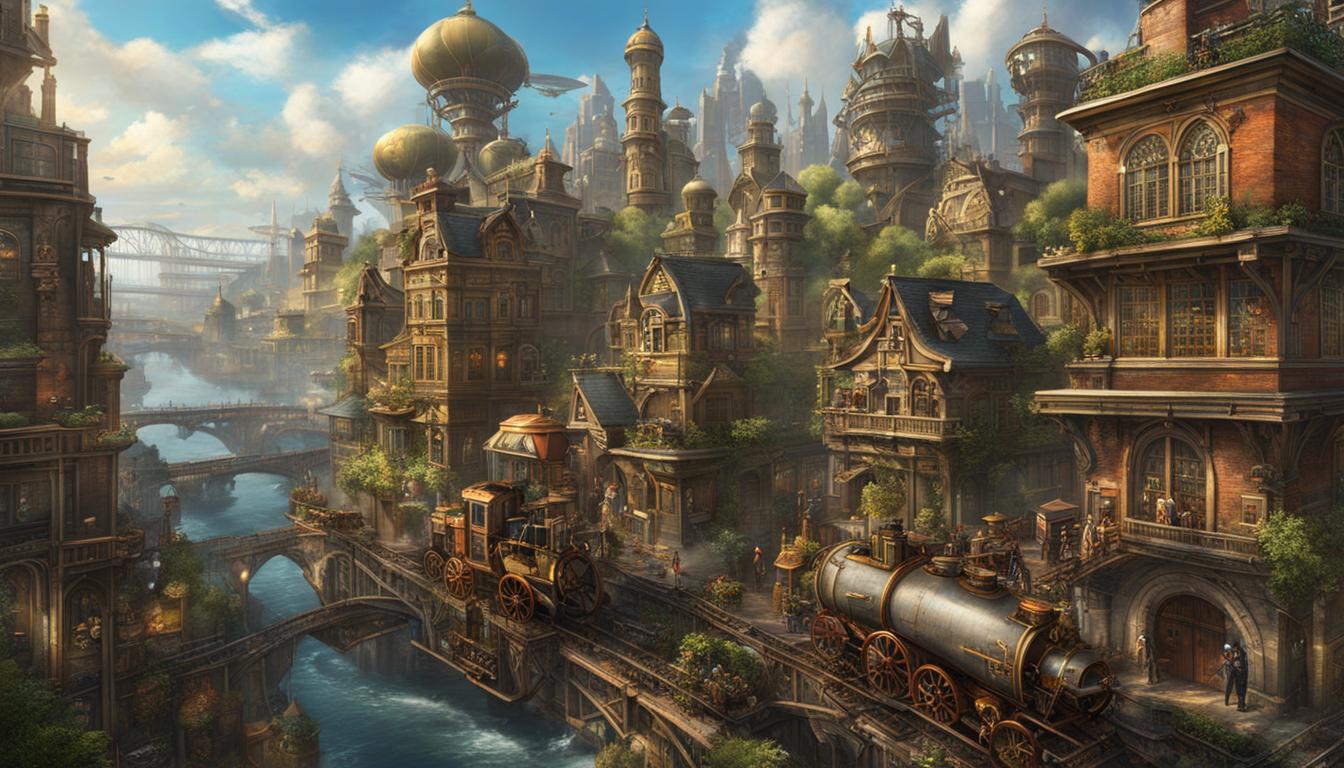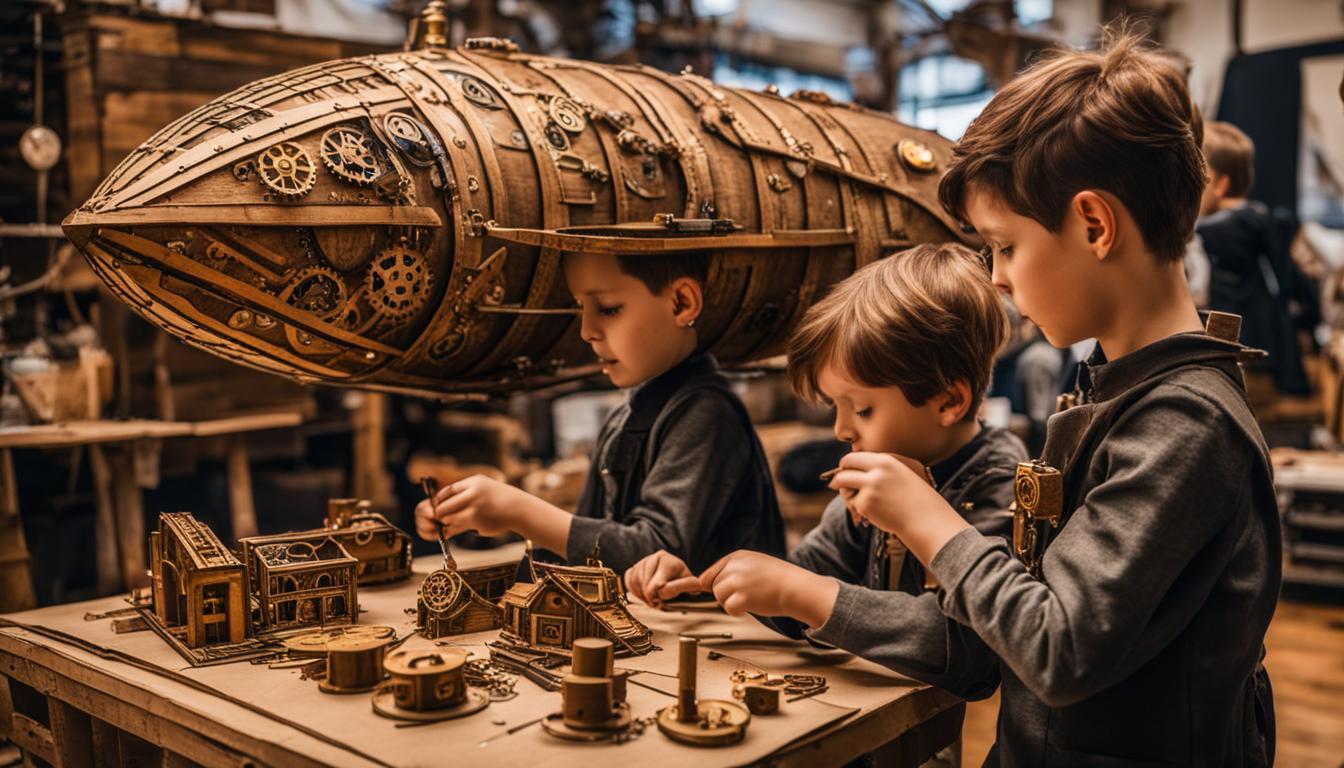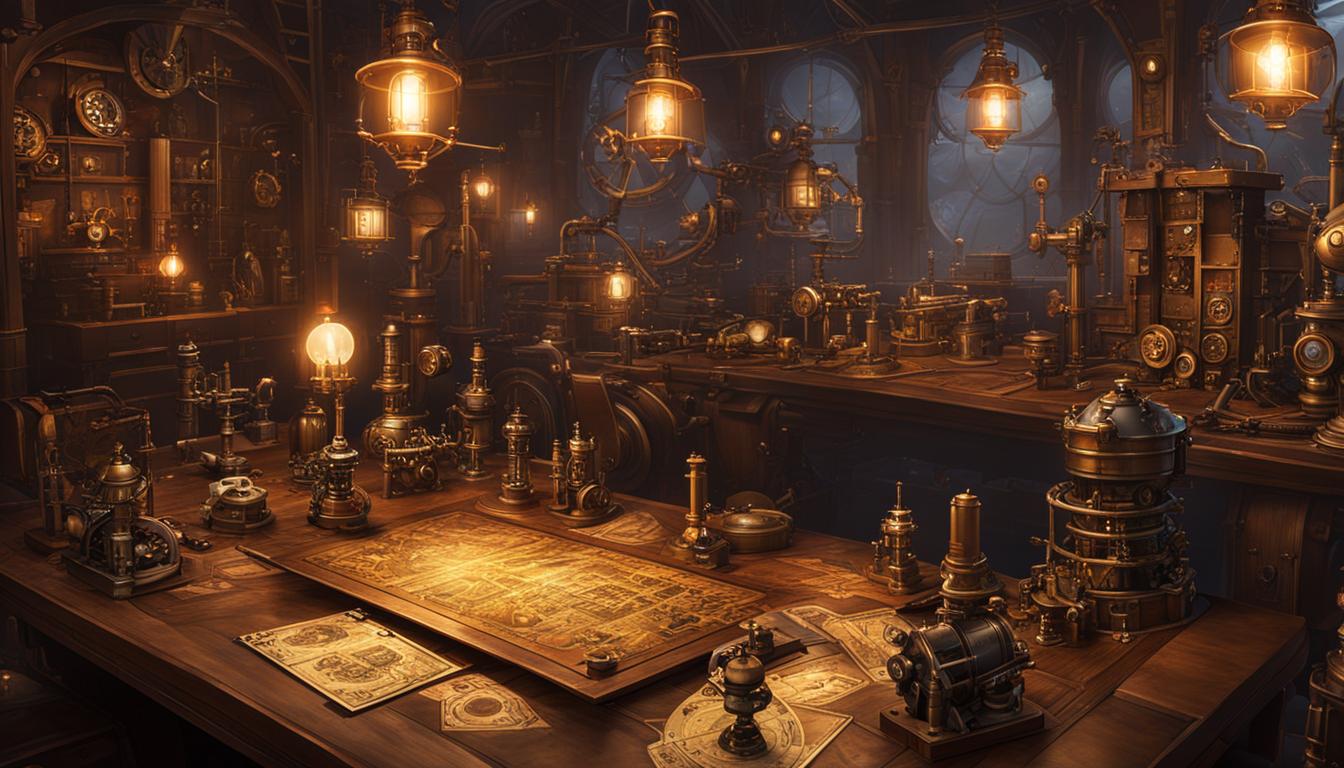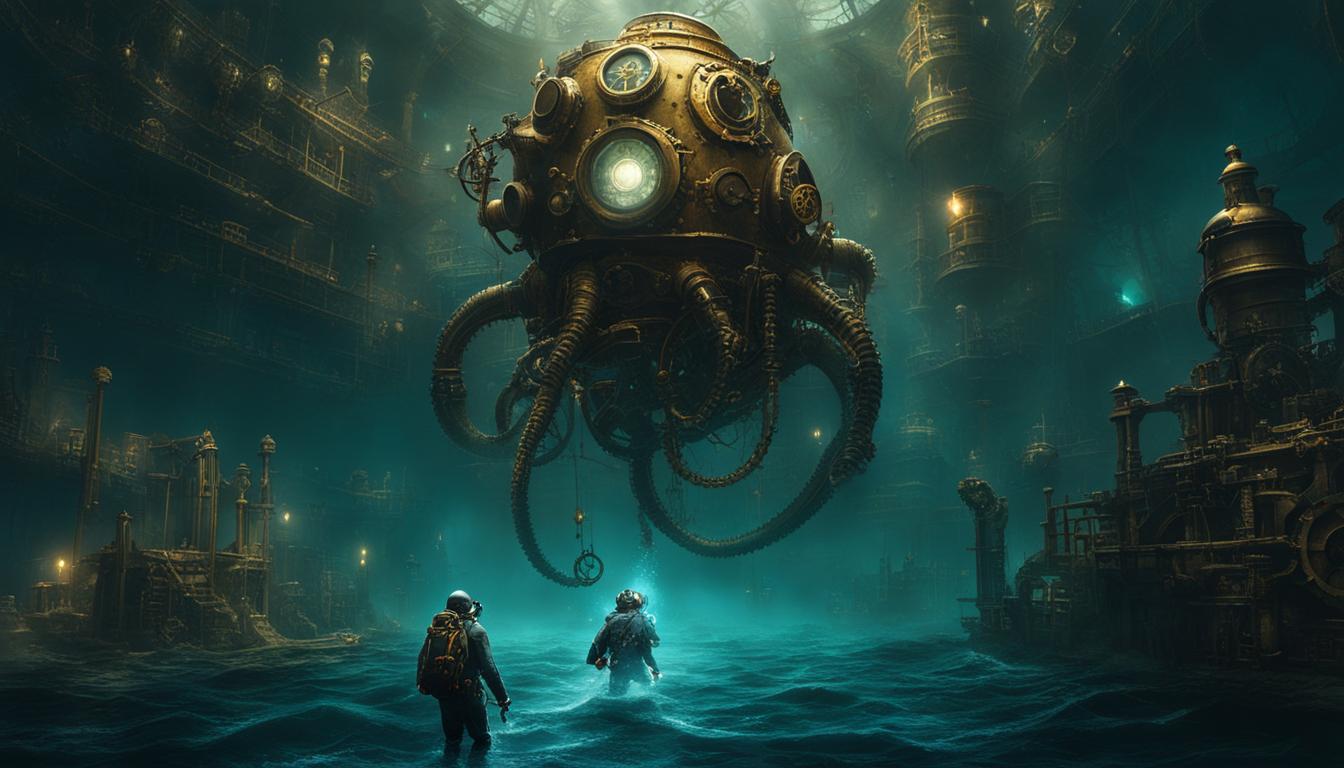Step into the fascinating world of steampunk, where history and fantasy intertwine to create a captivating genre. With its unique fusion of elements, steampunk brings together the charm of the past and the endless possibilities of the future. From literature to art, fashion to music, steampunk has become a cultural movement that captivates enthusiasts worldwide.
Key Takeaways:
- Steampunk is a genre that combines historical and fantastical elements.
- It is inspired by the 19th-century industrial revolution and Victorian aesthetics.
- Steampunk stories often take place in alternate historical settings.
- The genre explores the social and cultural aspects of the time period.
- Steampunk has evolved into a cultural movement celebrated through conventions and festivals.
The Origins of Steampunk History
The origins of the captivating genre known as Steampunk can be traced back to the 19th century, a time of great innovation and change during the industrial revolution. Although the term “Steampunk” was not officially coined until the late 20th century by author K.W. Jeter, several works of fiction laid the foundation for this unique genre.
Notable pioneers of Steampunk literature include Jules Verne and H.G. Wells, whose imaginative stories combined science fiction with the technological advancements of the Victorian era. Verne’s “20,000 Leagues Under the Sea” and Wells’ “The Time Machine” are revered as early examples of Steampunk literature, showcasing the fusion of history and fantasy that defines the genre.
Over time, Steampunk evolved beyond literature and became a cultural movement, inspiring art, fashion, and music. This genre continues to captivate audiences with its imaginative blend of history and fantasy, offering a unique lens for exploring themes of technology, societal progress, and human ambition. As new works of fiction, artworks, and fashion designs continue to emerge, the ever-evolving nature of Steampunk ensures its enduring appeal for fans around the world.
“Steampunk is not just a literary genre; it has become a cultural phenomenon, influencing art, fashion, and music.”
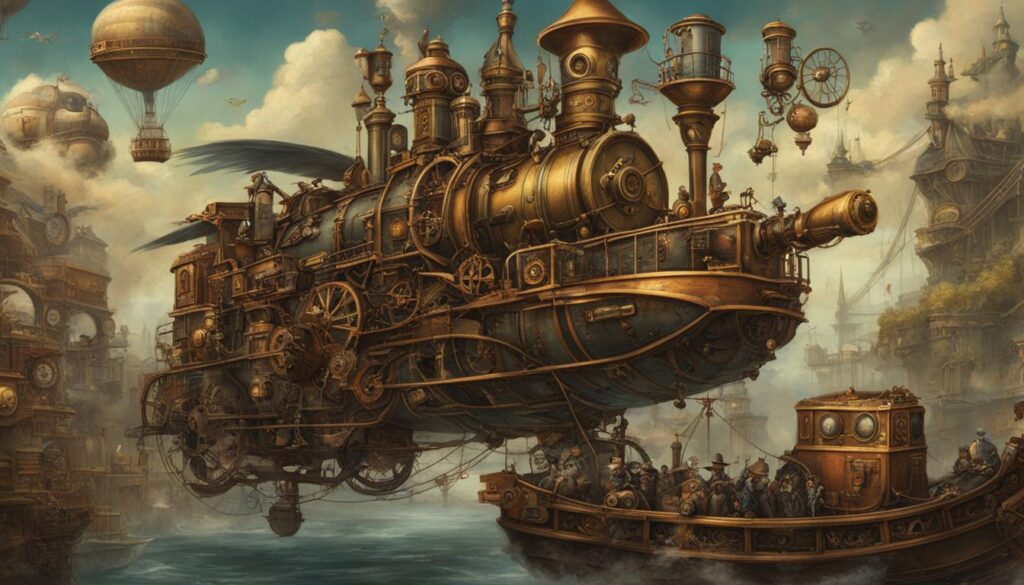
The 18th Century: The Dawn of a New Era
The 18th century marked a pivotal period in history, where significant advancements in steam technology laid the foundation for the emergence of the steampunk genre. This era saw the rise of influential figures who played key roles in shaping the future of steam-powered machinery and setting the stage for the fusion of history and fantasy that characterizes steampunk.
One such figure was James Watt, a Scottish inventor and mechanical engineer. Watt’s improvements to the steam engine in the late 18th century greatly enhanced its efficiency and reliability. His innovations, including the separate condenser and rotary motion capabilities, paved the way for steam power to become a driving force in transportation and industry. The impact of Watt’s inventions cannot be overstated, as they revolutionized the world and laid the groundwork for the steampunk genre.
| Key Figures in the 18th Century | Contributions to Steam Technology |
|---|---|
| James Watt | Inventor of the separate condenser and rotary motion capabilities for the steam engine |
| Benjamin Franklin | Conducted experiments and research on steam power |
| Jacques de Vaucanson | Invented automata and mechanical devices, inspiring the integration of machinery in steampunk |
Another notable figure of the 18th century was Benjamin Franklin. While primarily known for his contributions to electricity and the American Revolution, Franklin also conducted experiments and research on steam power. His work laid the groundwork for future developments in steam technology and contributed to the historical context that steampunk draws upon.
Additionally, Jacques de Vaucanson, a French inventor, and engineer, made significant contributions to automata and mechanical devices during this period. His creations, including the Digesting Duck and the Flute Player, showcased the possibilities of combining machinery with human-like features. These innovations would later influence the integration of automatons and mechanical devices in the steampunk genre, adding a touch of intrigue and wonder to the narratives.
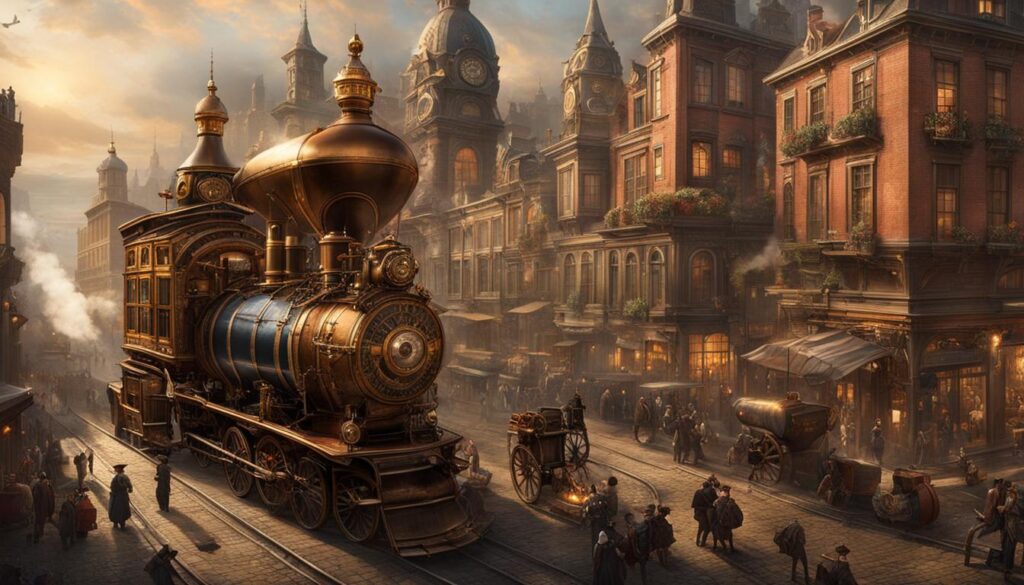
The Influence of the 18th Century on Steampunk
“The 18th century provided the groundwork for the fusion of history and technology that defines steampunk. The advancements in steam technology and the creative minds of inventors like James Watt and Benjamin Franklin paved the way for the imaginative worlds of steampunk literature and culture.”
The 18th century represents a crucial period in history that laid the foundations for the steampunk genre. The advancements in steam technology, driven by the innovations of key figures such as James Watt, Benjamin Franklin, and Jacques de Vaucanson, not only revolutionized transportation and industry but also inspired the imaginative blending of history and fantasy that defines steampunk. More than a mere aesthetic or literary trend, steampunk is a captivating fusion of historical elements and futuristic innovations that continues to captivate readers and enthusiasts around the world.
Conclusion
Steampunk, with its captivating blend of history and fantasy, has mesmerized enthusiasts from around the world. This genre offers a unique fusion of elements, combining the Victorian era’s elegance with futuristic innovations. It has become much more than just a literary genre; it has evolved into a cultural phenomenon, inspiring art, fashion, and music.
The enduring appeal of steampunk lies in its ability to transport us to a world where time and technology coexist in harmony. It sparks our imagination and invites us to question the boundaries of what is possible. Steampunk’s rich narrative landscape, with its vivid descriptions and intricate world-building, continues to captivate readers and viewers alike.
As we look to the future, the steampunk genre shows no signs of slowing down. New works of fiction, art, and fashion continue to emerge, pushing the boundaries of creativity and innovation. Steampunk invites us to reimagine our reality, offering a realm where history and fantasy intertwine, and where the possibilities are limitless.
FAQ
What is Steampunk?
Steampunk is a subgenre of science fiction and fantasy that blends historical elements with futuristic innovations. It incorporates technology and aesthetic designs inspired by 19th-century industrial steam-powered machinery, creating a unique fusion of history and fantasy.
Where are Steampunk stories typically set?
Steampunk stories are often set in alternate histories of the Victorian era or the American “Wild West”, where steam power remains in mainstream use. These settings allow for the exploration of social and cultural aspects of the time period.
Who were the pioneers of Steampunk literature?
Notable authors such as Jules Verne and H.G. Wells laid the foundation for the Steampunk genre with their works of fiction that combined science fiction with the Victorian era’s technological advancements. Verne’s “20,000 Leagues Under the Sea” and Wells’ “The Time Machine” are often cited as early examples of Steampunk literature.
When was the term “Steampunk” coined?
The term “Steampunk” was coined in the late 20th century by author K.W. Jeter. However, the genre itself had already been established through the works of authors like Verne and Wells.
How has Steampunk influenced art, fashion, and music?
Steampunk has become a cultural movement, inspiring artists, fashion designers, and musicians to incorporate its aesthetic into their creations. Steampunk-themed conventions and festivals also provide a platform for enthusiasts to celebrate and showcase their work.
What are some key influences on Steampunk from the 18th century?
The 18th century marked the dawn of the Industrial Revolution and saw the rise of steam-powered machinery. Figures such as James Watt, Benjamin Franklin, and Jacques de Vaucanson played significant roles in shaping the early influences of the steampunk genre with their inventions and ideas.
What makes Steampunk a captivating genre?
Steampunk offers a unique fusion of history and fantasy, creating a rich narrative landscape. It appeals to fans who appreciate its creativity, innovation, and exploration of social themes. The genre continues to evolve, with new works and creations continually emerging.

